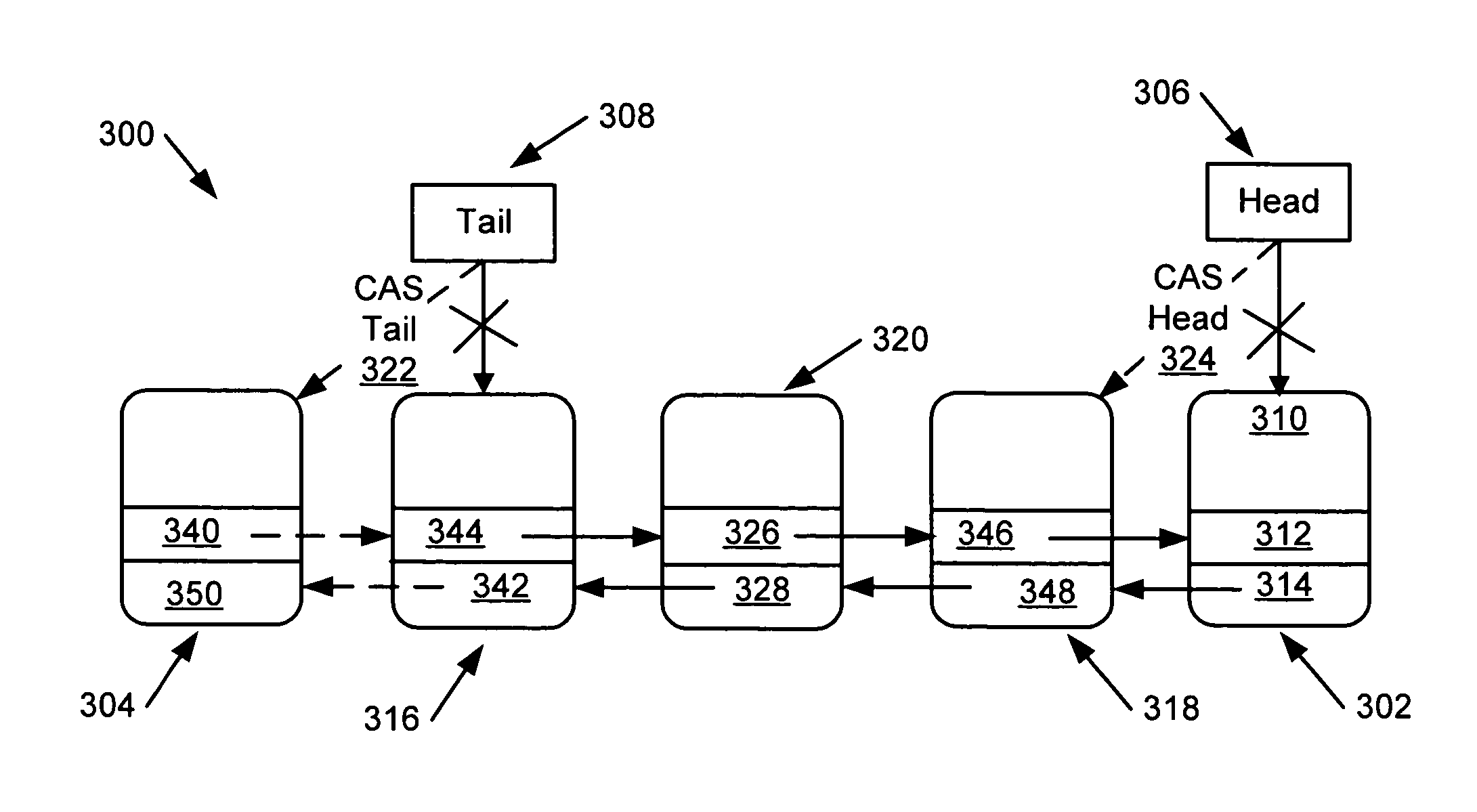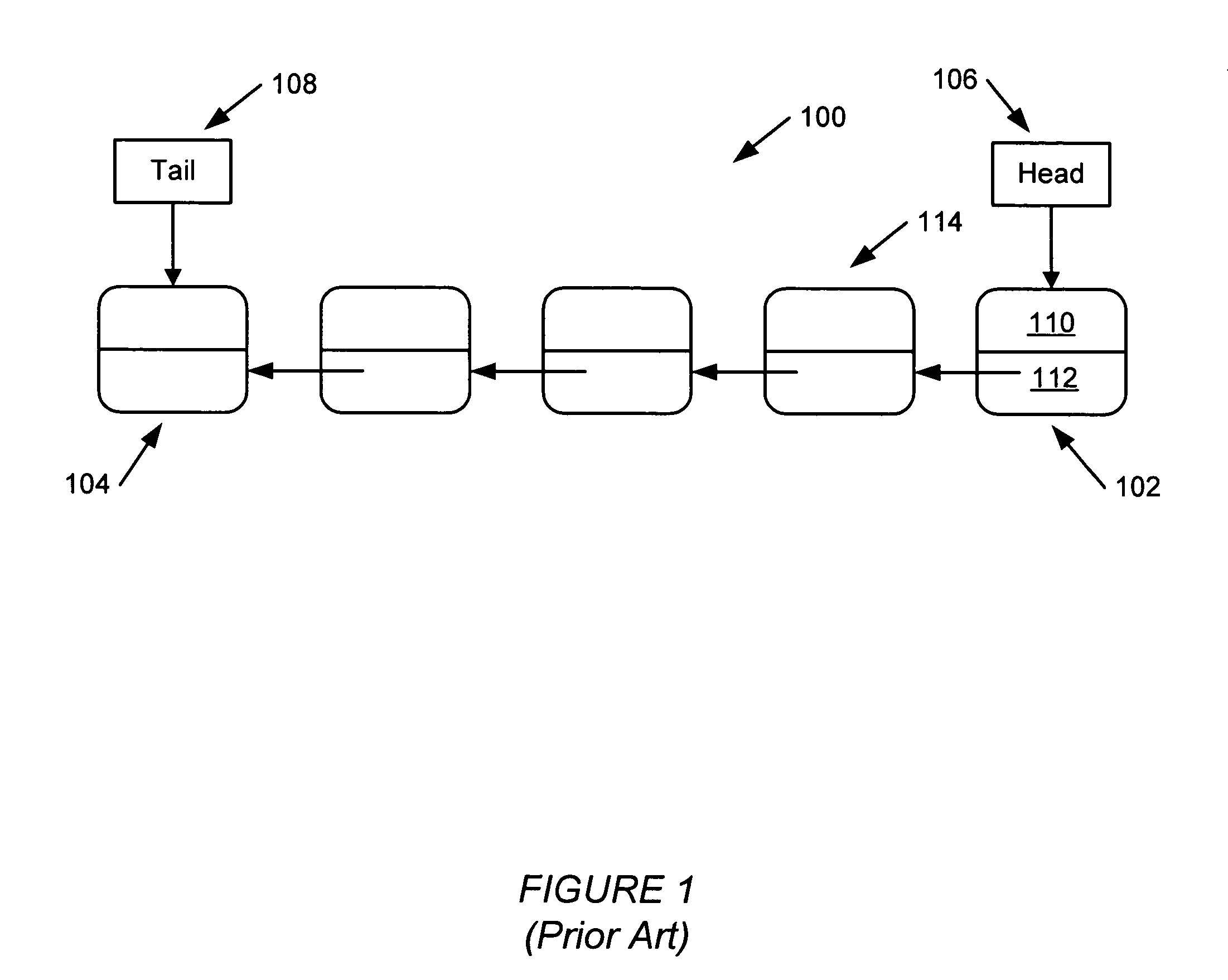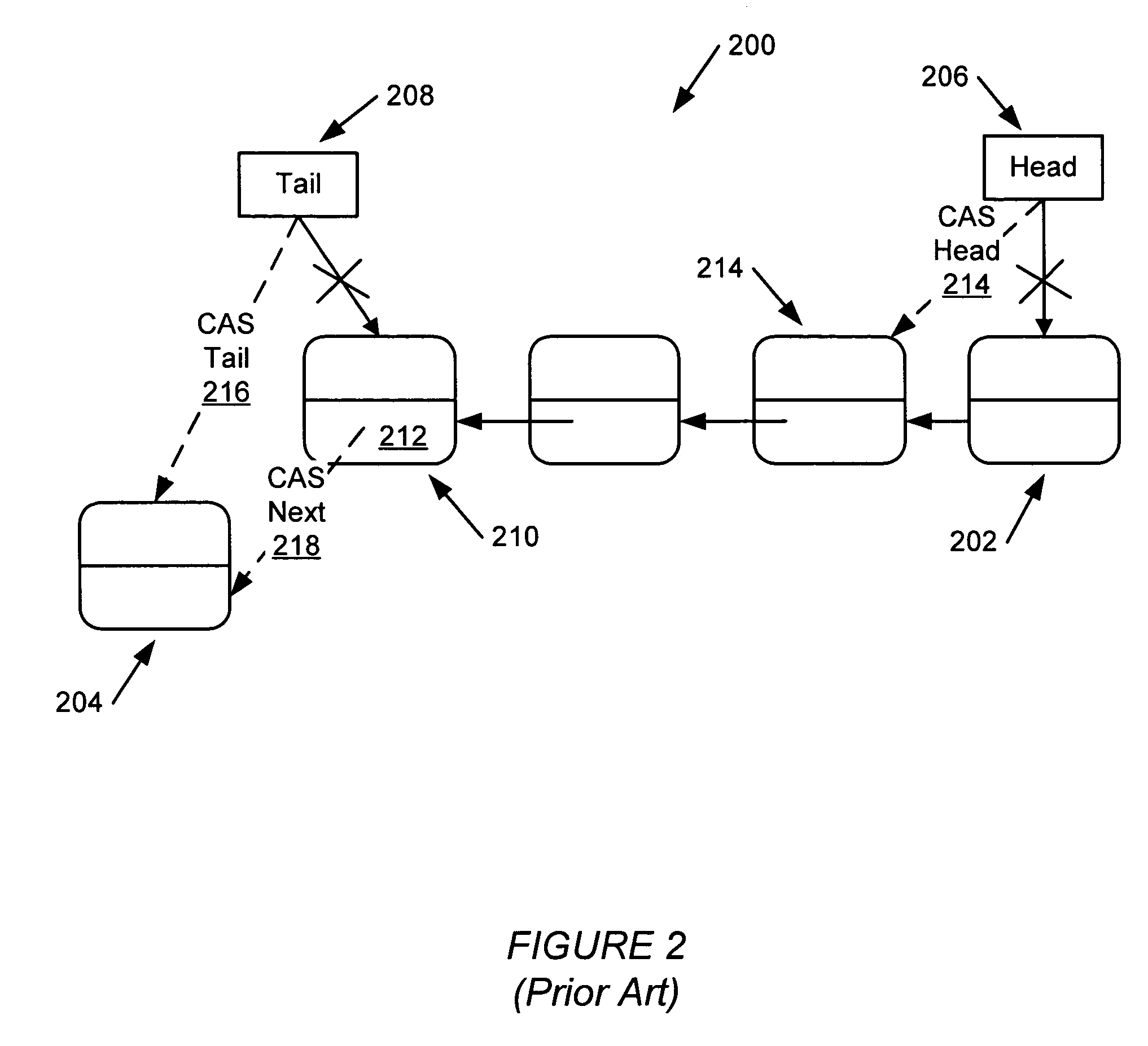Implementing optimistic concurrent data structures
a data structure and concurrent technology, applied in the field can solve the problems of concurrent data structure implementation, return failure, limited robustness of lock-based fifo queue implementation,
- Summary
- Abstract
- Description
- Claims
- Application Information
AI Technical Summary
Benefits of technology
Problems solved by technology
Method used
Image
Examples
Embodiment Construction
[0025]Exemplary embodiments of the invention will be described with reference to the accompanying drawings. Like items in the drawings are shown with the same reference numbers.
[0026]Embodiments of the present invention relate to techniques for implementing and using a concurrent FIFO queue represented as an “optimistic” doubly-linked list (hereinafter “an optimistic FIFO queue”). Nodes of this optimistic doubly-linked list are allocated dynamically and links between the nodes are updated optimistically (i.e., assuming that threads concurrently accessing the FIFO queue will not interfere with each other) using a simple store operation rather than a synchronization operation (e.g., a CAS operation). Concurrent linearizable, non-blocking enqueue and dequeue operations on the two ends of the doubly-linked list proceed independently (i.e., are disjoint). These operations require only one successful single-word synchronization operation (e.g., a CAS operation) on the tail pointer and the...
PUM
 Login to View More
Login to View More Abstract
Description
Claims
Application Information
 Login to View More
Login to View More - R&D
- Intellectual Property
- Life Sciences
- Materials
- Tech Scout
- Unparalleled Data Quality
- Higher Quality Content
- 60% Fewer Hallucinations
Browse by: Latest US Patents, China's latest patents, Technical Efficacy Thesaurus, Application Domain, Technology Topic, Popular Technical Reports.
© 2025 PatSnap. All rights reserved.Legal|Privacy policy|Modern Slavery Act Transparency Statement|Sitemap|About US| Contact US: help@patsnap.com



